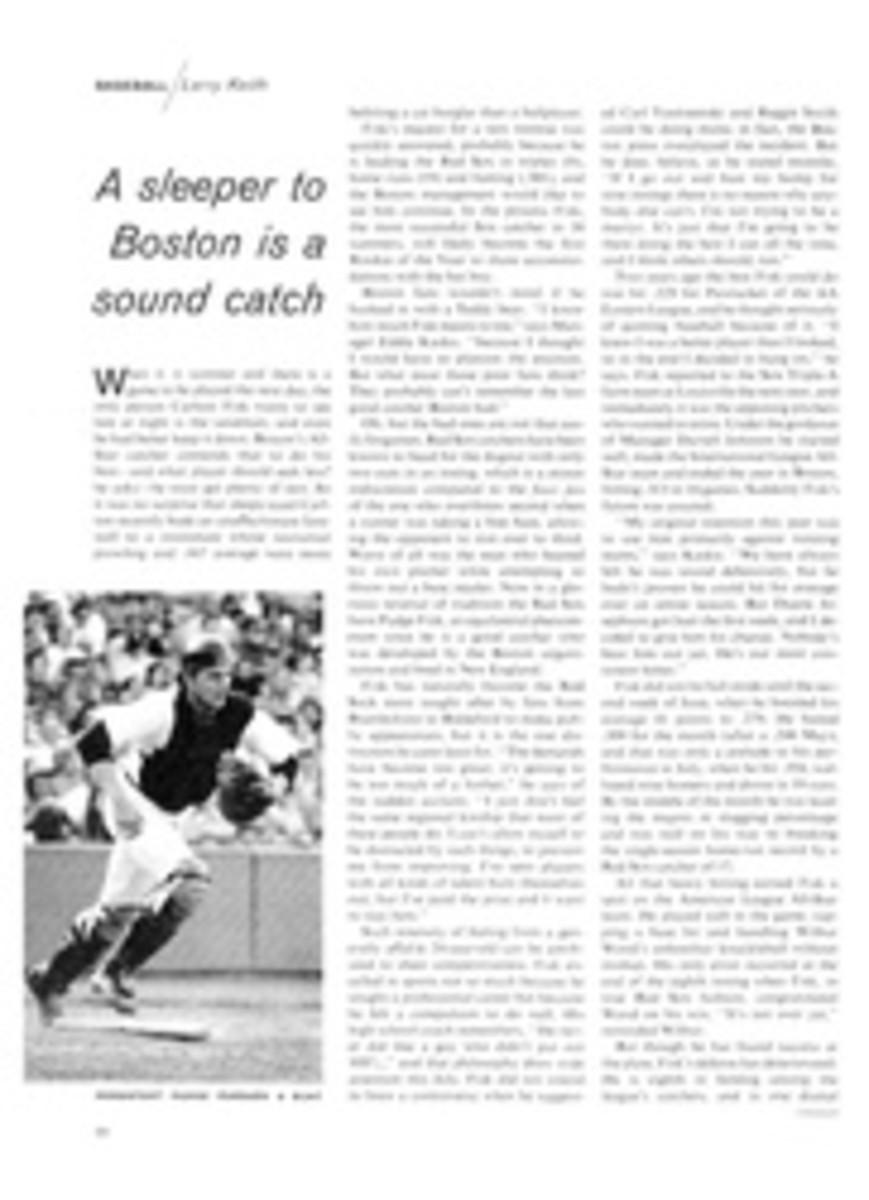
Over the Wall and up the Mountain
The annals of World War II prison camps are abundant with tales of daring or bizarre escape attempts, but few can match the adventure of Felice Benuzzi, an Italian colonial civil servant, for sheer eccentricity. Interned by the British in 1941 and assigned to POW Camp No. 354 near the village of Nanyuki, Kenya, Benuzzi became obsessed with the notion of escape not to rejoin his comrades but to climb a mountain.
The mountain in question was 17,040-foot Mount Kenya, which Benuzzi and his fellow prisoners could see clearly from the yard of Camp 354. He was an experienced climber, and the peak—the tallest he had ever seen—loomed as a kind of challenge, tantalizingly close and yet so far. Lying between him and Batian, the tallest of Mount Kenya's two summits, was a stretch of equatorial jungle containing—he assumed—wild animals and a native population whose behavior toward Italian-speaking whites was at least suspect. Putting these obstacles out of his mind, Benuzzi began to plot his escape from Camp 354. He also started to outfit himself with mountain-climbing gear.
Without hinting why, Benuzzi wrote to his wife, asking her to send all his warmest clothes. He hoarded chocolate, dried fruit and crackers from his food parcels and quit smoking to barter his weekly cigarette ration for food and supplies. Laboriously, he undid the netting of a bunk bed, then twisted it into a quarter-inch, 35-foot mountaineer's rope. One of the camp tailors turned two of his blankets into a climbing suit.
To get into shape, Benuzzi began a rigorous body-building program. He found an old auto bumper in the camp junk pile and used it to make crampons. The camp blacksmith turned a pair of hammers stolen from the maintenance workshop into ice axes. Benuzzi got himself into the camp commandant's office one day with a wad of roofing tar and made an impression of the key to the vegetable garden, from which he then filed a crude duplicate.
His information on Mount Kenya was very spotty. He made detailed drawings from long-range observation of the western face, and he culled more information from old magazines. Then, miraculously, someone noticed that the label on a can of South African stew bore a drawing of Mount Kenya viewed from the opposite side. It would be vital later.
As the 32-year-old prisoner built his cache of supplies, burying them outside the camp gate near the prisoners' vegetable patch, he decided to make his break in January 1943. Two other prisoners agreed to go with him, a physician named Giovanni Balletto, who knew something about climbing, and 35-year-old Enzo Barsotti, who didn't.
And so, on Jan. 24, a prisoner disguised in a pair of British khaki bush shorts marched three men in POW fatigues through the camp gate. The "guard" returned to the mess hall and got out of his bogus uniform, while Benuzzi and his two friends hid out in a tool shed till nightfall. During the night Barsotti developed a fever, but he elected to go on. They dug out their knapsacks and started east, keeping to the underbrush and at times walking backward to confuse pursuers. They reached a dense forest and slept, setting out again at dawn.
The climbers bypassed native farms, noting landmarks for the return trip on sheets of toilet paper. Barsotti's fever undulated, but he refused to rest. A lumber camp guarded by a set of watchdogs caused them to lose nearly a day on a long detour. The ground now rose more steeply toward the plateau at the mountain's base. At their camp that night they huddled around the fire, yelling to frighten off the wild animals they heard all around them.
On the third morning Benuzzi and his companions climbed through Mount Kenya's famous bamboo forest and onto the rocky slopes of the mountain. Already behind schedule, they began to ration their food. Barsotti's fever persisted, but he carried on. At the 14,000-foot level, still insisting he felt fine, he suddenly stumbled and fell, unconscious. Dr. Balletto examined him and decided he could go no further. The spot became their base camp.
On the morning of Feb. 2, Benuzzi and Balletto rounded Batian's south face and saw, just like the picture on the can of stew, a lower peak, Lenana. They hurried on across a glacier and some frozen scree, scouting the trail for their final assault. The two climbers rested the next day, then a few hours after midnight they began their final ascent. By dawn they were at 16,000 feet, but now they began to encounter real difficulties. The sisal rope, grown cold and stiff, would not slide easily through the rings of the pitons. Precious minutes were wasted in backtracking. Finally, a blizzard caught them high on the wall of Batian. Climbing slowed to a crawl, and Benuzzi realized they would not make it that day. They turned back.
It was nearly dark before they found the tent and Barsotti. Two days later they set out again, this time toward the top of Lenana. And then, in an anticlimax, they suddenly found themselves at the top. Benuzzi pulled out a small Italian flag he had been carrying and proudly planted it at the top.
Their ascent had taken nine days, and their supplies were woefully short. But they hoped to reach the prison camp in three days, and they were buoyed by their conquest. They started off at dawn on Feb. 7, and that afternoon, giddy with hunger, they built a fire to boil some rice—then found they had left all their remaining butter and salt at the base camp. Some tea and coffee remained, but no sugar.
During the next two days they plodded through a wealth of wild food—bamboo roots, for example—without taking advantage of it. Finally they met a band of Kikuyu tribesmen who walked along with them for a few miles and then left. Benuzzi and his companions worried, insanely, that the natives would turn them over to the British.
When they finally made it back to Camp 354, the other prisoners cheered them lustily. When they told the camp commandant that they had survived 18 days on 10 days' rations and had planted their flag on Mount Kenya, he reprimanded them smilingly. Not until the feat became public knowledge days later, when a party of British climbers found the small Italian flag on Lenana, was the commandant's hand forced. Reluctantly, he sent the trio to close confinement. By that time they didn't care. All they wanted was sleep.

